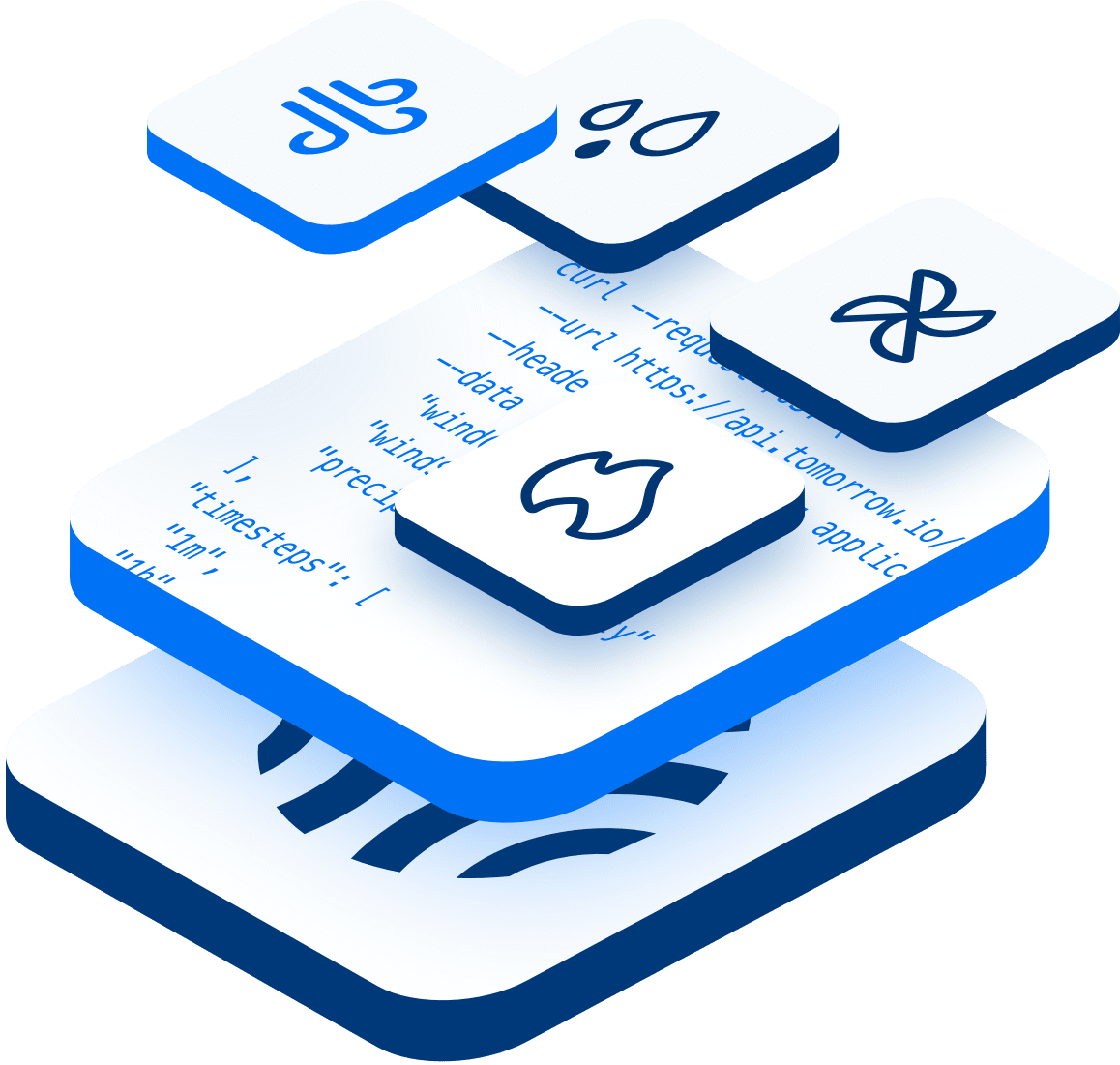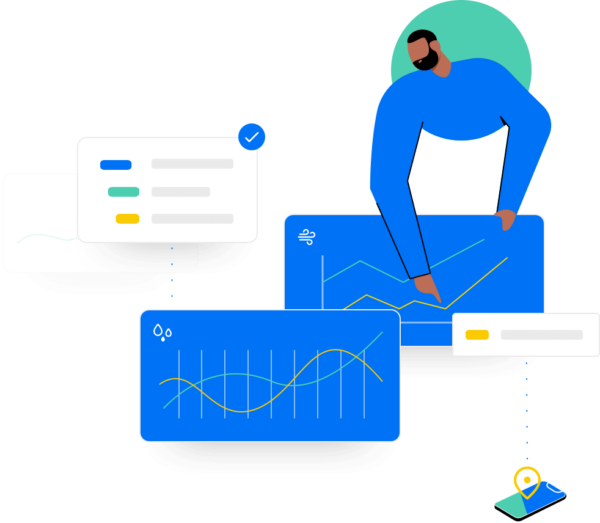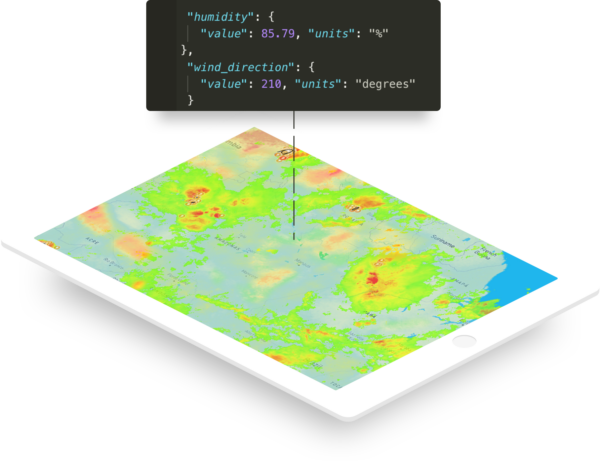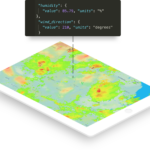TL;DR:
- Historical weather data is crucial for understanding long-term climate trends and improving weather forecasting models.
- Access to weather data has evolved with the use of APIs, providing programmatic access to current and historical weather data.
- Tomorrow.io offers a historical weather API for accessing instant synchronous programmatic hourly and daily historical weather data.
- Historical weather data can be utilized across various industries to improve operational resilience and drive better decisions.
- By leveraging historical weather data strategically, businesses can unlock the power of past weather information to boost their bottom line.
Have you ever had to search for weather data from more than a week ago?
Or maybe weather from the same date over the past two decades?
The historical weather data you’re looking for involves various parameters, such as temperature, wind speed and direction, peak gust, humidity, and precipitation.
Let’s assume you’re searching for last year’s weather data for the bustling heart of downtown Boston and the urban and suburban landscapes of Tokyo, Singapore, Mumbai, and Houston.
The quest for historical weather data is not unique; it’s integral to many global industry strategies. These types of requests are common from various industry leaders seeking to protect assets and manage commercial operations around the world:
- Global commercial air traffic delays can correlate with the onset, duration, and severity of winter weather events for more efficient diversion in the future.
- Construction site safety hazards come to light and effectively help employees avoid them by considering historical weather.
- Energy infrastructure can avoid faults with better qualification of historical power demand statistics based on weather.
- Outdoor events coordinators and logistics specialists use previous weather data to determine staffing needs weeks or even months ahead.
- Emerging modern technologies can benefit by compiling mass amounts of data to train machine learning models with the best weather data available.
Where can you find this precise weather data in a relatively short time?
And what other ways are there to use it in current applications?
The solution lies in a comprehensive exploration of historical weather archives to meet your personal or business’s unique needs and use cases. Various data sources, such as ground—and space-based observing platforms and advanced ML-powered weather model systems, can offer such details.
However, accessing and applying the extensive collections of gridded data from historical weather archives can be a complex process without the appropriate knowledge.
That’s why we’ve compiled a short guide to demystify all things related to historical weather—how to access historical weather data, how to integrate it via API into your applications, and some insights into how different industries currently leverage past weather data.
What is Historical Weather Data?
Historical weather data refers to the collection and archiving of past weather observations and measurements, including temperature, precipitation, wind speed, and other meteorological variables. This data is crucial for understanding long-term climate trends, analyzing past weather events, and improving weather forecasting models.
In fact, meteorologists depend on both current observations and past historical data to inform their sophisticated weather models. These models ultimately dictate the forecast claims of “Cloudy with a high of 75 degrees,” widely consumed by the public.
Meanwhile, decision-makers in all industries have often relied on historical data of all types to help them understand historical weather trends. From farmers and construction workers to sports leagues and airlines, accessing past weather data and knowing its effects on business is crucial to running optimal operations.
An Overview Of Weather Data Collection
Did you know that we have only been systematically collecting weather data for 150 years?
Research has found that humans have been keeping weather records since the first millennium BC. The first meteorology tools were invented in 1441 with the rain gauge leading the way in rainfall record collection.
The issue with very early weather records was that they were only for local weather.
As communication expanded and the population grew across the United States, we needed a better solution.
In 1849, the Smithsonian Institution brought weather instruments to telegraph companies and established an extensive observation network.
By the end of that year, hundreds of volunteers were reporting weather information to the Smithsonian in the U.S.
Twenty years later, the telegraph service in Cincinnati, Ohio, began collecting weather data and producing weather charts, creating the first systematic effort to archive weather data in the United States.
Since then, our weather archive in the US has grown significantly. Today, we collect weather data through space-based radar satellites, ground weather stations, ocean buoys, and commercial planes and ships.
With weather modeling advancements, AI and ML are now being used to create more accurate weather forecasts based on historical weather data.
Weather APIs have also made it easier than ever before to access historical weather data, weather forecast data, and more through accessible weather API keys.
How Access To Weather Data Has Evolved
As technology has advanced, virtual archives for historical weather data emerged, providing easier access and storage of this valuable information.
For many years, people seeking historical weather data would access data from the Global Historical Climatology Network daily (GHCNd) database, which is managed and maintained by NOAA NCEI.
Another data source is The Old Farmer’s Almanac weather history tool, which provides access to weather reports from over 1,300 weather stations in cities across the United States and Canada dating back to 1945.
Over the years, our access to and the contents of our archives have evolved.
With new technology has come the use of APIs to provide programmatic access to current and historical weather data.
Today, numerous weather API providers, such as Tomorrow.io, OpenWeatherMap, Visual Crossing, and many more, offer a wide range of historical weather data, forecasts, and other weather-related information.
These APIs are now used in diverse applications, including agriculture, travel and tourism, insurance, research, and education, enabling more in-depth analysis and informed decision-making across various industries and fields.
Changemakers In Historical Weather Data: Tomorrow.io
The value of historical weather data is immense.
At Tomorrow.io, we understand the value of this data and want to provide users with streamlined access to those data points.
Through Tomorrow.io’s Weather API, users have access to instant synchronous programmatic hourly and daily historical weather data for any location for a specific time frame, up to seven years in the past!
And that’s not all; Tomorrow.io offers a variety of historical weather data through:
- Recent-History Weather Data — Using the recent history weather API, you can access historical weather data for your location, including minute-by-minute, hourly, and daily data for the last seven days.
- Historical Archive — Tomorrow.io’s Historical Weather API allows you to query weather conditions by specifying the location, fields, timestamps, and the start and end to include a historical timeline up to 20 years in the past.
- Climate Normals — Climate Normals is a comprehensive view of climate patterns over a 20-year period, presenting data for the period between 2000 and 2020.
With the Tomorrow.io historical weather API, you can empower your teams to make a greater business impact across any industry.
How to Access and Utilize Historical Weather Data via Weather API
Tomorrow.io’s historical weather API provides people, businesses, and governments with the best weather data archive available to unleash the power of past weather data sets on their organization’s desired outcomes and correlate it with past occurrences.
To access historical weather data from Tomorrow.io, you’ll need to book a call with one of our expert weather consultants.
Once your account is set up, you’re ready to get started.
Developers and programmers can access Tomorrow.io’s historical weather API similarly to Tomorrow.io’s other API endpoints, using the endpoint:
POST /v4/historical
Users can request up to a full month’s worth of data in a single call with access to point locations, polygons up to 10k square km, and polylines up to 2k km long.
The following weather parameters are available for historical access, and you can learn about more weather parameters in Tomorrow.io’s documentation.
The following weather parameters are available for historical access, and you can learn about more weather parameters in Tomorrow.io’s documentation.
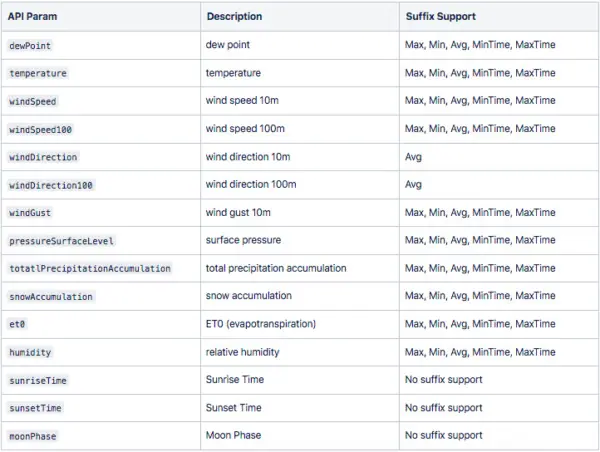
And just like with our regular weather API, users must simply select their parameters for location, fields, and timestamps and get instant synchronous access to the historical data at the time and location of their choice.
Please note that Tomorrow.io’s historical archive is based on a reanalysis model that blends past short-range weather forecasts with observations through advanced data assimilation techniques.
The historical archive data deviates from the recent historical data -7 days since it is based on a different observation data assimilation system that incorporates a larger set of final observational records.
So, for example, if the forecast said it was raining at 4:56 p.m. on Saturday, that information is now recent-history weather data or historical forecast data.
How To Apply Historical Weather Data Within Different Businesses
Understanding every application of historical weather data can be challenging, but once you identify the use cases that align with your organization’s goals, it becomes much clearer.
Whether you’re focused on
- Bringing down costs and increasing savings
- Improving customer and employee safety
- Or enhancing operational efficiency
It makes a difference to leverage weather data strategically and can make a significant impact.
By pinpointing the most relevant applications for your business, you can unlock the power of historical weather information to drive better decisions, improve customer satisfaction, and, ultimately, boost your bottom line.
Below are a few examples of how it can be applied to a variety of industries.
How Historical Weather Data Improves Operational Resilience
Historical Weather Data Use Case Studies
Tomorrow.io has partnered with dozens of industry titans to help them manage the impact of weather and generate better business outcomes based on weather.
One thing we’ve heard over and over consistently across all the different industries we work with is just how valuable it is to have access to historical weather data.
Convenient and programmatic access via our sophisticated and powerful historical weather API will accelerate the application of this data to use cases that provide significant business impact:
Insurance Companies
Organizations dealing with claims and liabilities need historical weather data to investigate those claims. Accurate, hyper-local historical data significantly minimizes payouts to fraudulent claims while maximizing profitability and understanding of pricing and leverage.
- Improve Claims Validating: Use historical weather data to cross-reference and identify potentially fraudulent claims.
- Enhance Customer Experience: Proactively notify at-risk policyholders before anticipated severe weather events and offer guidance on protecting their property.
- Streamline Assessments: Using past weather data to understand the likely extent of damage, enabling faster and more accurate claim assessments and processing.
Logistics and Transportation
Organizations can utilize historical data to understand better the impact of high-impact and severe weather conditions on shipping delays, pushes/cancellations, SLA adherence, and more. All of these help to mitigate future disruptions while enabling more efficient operational planning and simultaneously increasing customer satisfaction.
- Optimize Maintenance Costs: Analyzing weather patterns to anticipate potential vehicle wear and tear, allowing for proactive maintenance scheduling to avoid costly breakdowns.
- Proactively Communicate: Notifying customers of potential weather-related delays or hazards in advance, allowing them to make informed decisions and adjust their plans if necessary.
- Dynamically Route Drivers: Adjust routes in real-time based on current and forecasted weather conditions to minimize delays and ensure on-time deliveries. Historical weather data can be used to cross-reference past severe weather events.
Sports Teams and Stadium Operators
Industries that function primarily outdoors can use historical weather in many ways to reduce costs, improve efficiency, and improve customer and employee safety.
- Increase Revenue: Directly correlate past retail merchandise sales at events with the weather, allowing them to manage inventory and craft forward-looking promotions that bring in additional revenue for pro sports teams.
- Improve Safety Protocols: Develop and refine safety protocols based on historical weather data, such as establishing heat index thresholds for event modifications or cancellations.
- Contingency Planning: Using historical weather data to create comprehensive contingency plans for various scenarios, ensuring smooth operations and minimizing disruptions.
In the clip below, Director of Operations at World Triathlon, tells about just how dire the need for contingency planning is.
On-Demand Companies
Companies in the on-demand space, like Uber, can leverage historical data to analyze the impact of weather on consumer and rider demand, driver availability, traffic delays, and much more. This can help on-demand services optimize future operations, routes, staffing, and incentives. The same goes for on-demand food delivery; informing delivery drivers of weather delays is crucial.
Here are a few more ways it can help:
- Informing Dynamic Pricing: Analyze historical weather patterns to optimize pricing strategies, such as increasing prices during high-demand periods or offering discounts to encourage off-peak usage.
- Allocating Resources: Using weather data to predict demand fluctuations and allocate resources accordingly, such as increasing the number of available drivers or delivery personnel during favorable weather conditions.
- Forecasting Demand: Using historical weather data to predict demand patterns and adjust service availability accordingly, ensuring optimal coverage and minimizing wait times for customers.
Aviation and Airline Operators
Aviation can retrospectively look at previous weather events to analyze delays, cancellations, and staffing.
In fact, JetBlue uses Tomorrow.io for this exact reason and is saving $300k a month, $3.7M in a year on operational costs. Having a holistic view of a past weather event is crucial to planning and mitigating future weather impacts to create a more efficient operation.
Companies in the aviation space can also use historical weather data to:
- Optimize Fuel Costs: Analyzing historical weather patterns to optimize flight routes and altitudes, minimizing fuel consumption and reducing costs.
- Enhance Pilot Training: Incorporating weather data insights into pilot training programs to better prepare them for various weather scenarios and improve overall safety.
- Collaborative Decision-Making: Sharing historical weather data insights with air traffic control, airports, and other stakeholders to enable better coordination and contingency planning, enhancing overall operational efficiency.
Energy and Utilities
The utility industry can correlate past weather data with power outage locations to optimize future staffing and can use weather trends to scope out future outages due to storms. Historical data can also improve models for wind generation and inform pricing by understanding the impact of weather on usage patterns.
- Demand Forecasting: Analyzing historical weather patterns to predict energy demand more accurately, allowing utilities to optimize power generation and minimize costs associated with over- or underproduction.
- Preventing Outages: Historical weather data can help identify areas at higher risk of weather-related outages, allowing utilities to prioritize infrastructure upgrades and preventive measures in those locations.
- Grid Optimization: Use historical weather data to optimize grid performance, such as adjusting power flow to minimize losses during high-demand periods or rerouting power to maintain stability during weather-related disruptions.
In the audiogram below, Data Scientist at Tomorrow.io, Maxfield Green, tells us about the importance of historical weather data in wind energy forecasting.
These use cases are only scratching the surface of what’s possible when leveraging historical weather data for trend analysis. This data powers predictive models and can uncover significant trends that make a huge business impact.
Conclusion
Historical weather data provides a comprehensive view of weather patterns and climate trends through history.
With Tomorrow.io’s historical weather API, users gain reliable weather data to inform forecasts for future weather conditions, enhance decision-making, and gain a clearer picture of past weather.
With the insights we gain through a historical weather API, people, businesses, and governments can prepare for the future with an understanding of past weather impacts.
